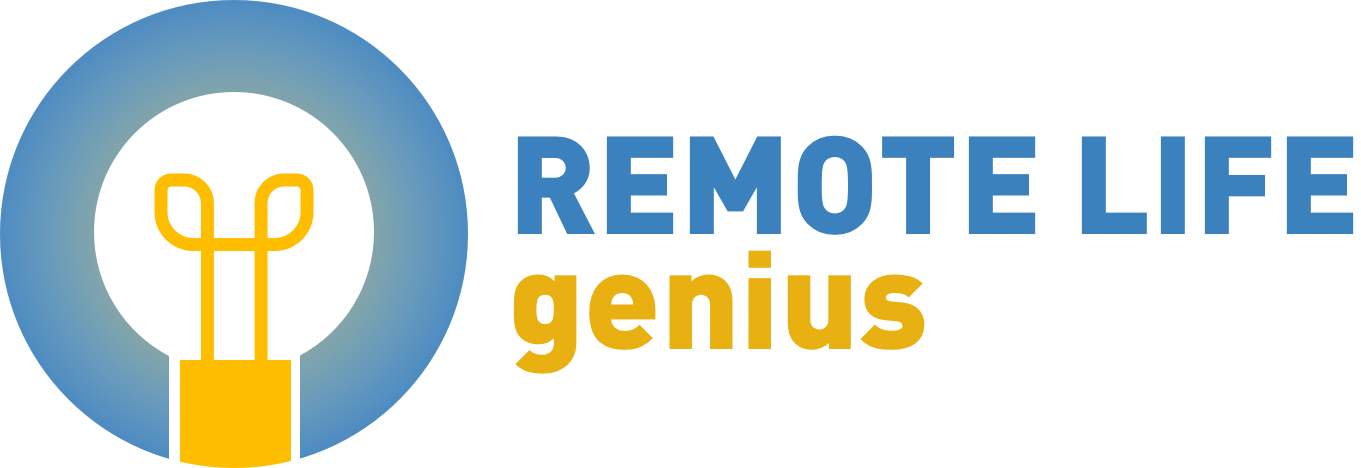When you leave your job to work as a freelancer, you gain a lot of freedom over your time and money. However, one of the main perks of many jobs is the option to contribute to a 401(k) retirement plan.
When you leave a job, you can take what you’ve already contributed to your 401(k). But that doesn’t mean you stop saving for retirement.
As a freelancer, your retirement savings are now your full responsibility. The good news is that you have several options to choose from.
We’ll walk you through four different retirement options in this article. Afterward, we’ll show you how to calculate what you need to save based on your retirement goals.
Page Contents
1. Roth or Traditional IRA
What is it?
IRA stands for Individual Retirement Account. IRAs have an annual contribution limit of $6,000 as of 2020. There is an additional catch-up contribution of up to for individuals over the age of 50. 
There are three different types of IRA accounts: Traditional, Roth, and Rollover.
- Traditional IRAs allow you to save money for retirement on a tax-deferred basis. This means you don’t pay taxes on that income until you take the money out. This is good news if you’ll be in a lower tax bracket during retirement than when you were employed. Meaning you’ll pay lower taxes on the income in your IRA.
- Roth IRAs allow you to contribute your after-tax money, or the income that you’ve already paid taxes on. This means that you won’t have to pay taxes when you take the money out later. Although there are usually conditions that have to be met for withdrawal. The money typically has to be in the account for 5 years and you must be retirement age or meet a qualified first home purchase to withdraw without penalties or tax.
- Rollover IRAs are accounts where you can move money from a qualified retirement plan such as a 401(k) or 403(b).
Who is it for?
If you’re just starting out with your retirement savings, an IRA is a great option. There are no immediate tax deduction benefits, but you’ll have the option to withdraw tax-free later on. We also recommend the Rollover IRA if you are leaving a job to start your own freelance business.
This is one of the easiest options available. There are no requirements to file and you don’t need to have employees to open one.
How to get started
The type of IRA that’s best for you changes based on your financial situation and goals. You can use the Fidelity IRA Calculator to find out if a Traditional or Roth IRA is better for you.
Once you know which type of IRA you want, all you have to do is open. Several online brokerages offer IRA accounts that are quick and easy to open. We recommend TD Ameritrade and Fidelity for those who are more hands-on with their investments. If you prefer to “set it and forget it” then consider the Betterment IRA or Charles Schwab.
2. SEP IRA
What is it?
The SEP (Simplified Employee Pension) IRA is a retirement account for small business owners, usually with no employees or only a few employees. It requires less administration than some of the other options on the list, like the Solo 401(k).
The SEP IRA has a higher contribution limit than Traditional or Roth IRAs. In 2020, you can contribute up to $57,000 or up to 25% of your self-employment earnings (whichever value is less).
With a SEP IRA you can deduct your contributions (or up to 25% of self-employment earnings, whichever is less) on your taxes. However, unlike the Roth IRA, you will be taxed when you withdraw during retirement.
Who is it for?
 The SEP IRA is recommended for self-employed individuals who have no employees, or only have a few employees. This is because you must contribute an equal percentage for each employee, counting yourself. That means if you save 15% of your earnings, you have to contribute 15% of each employees’ earnings.
The SEP IRA is recommended for self-employed individuals who have no employees, or only have a few employees. This is because you must contribute an equal percentage for each employee, counting yourself. That means if you save 15% of your earnings, you have to contribute 15% of each employees’ earnings.
If you don’t have any employees, this is a great option if you want to contribute more to your retirement. Additionally, this account is fairly light in terms of administrative tasks. You don’t have to report to the IRS every year and there isn’t much paperwork. And finally, you have an added degree of flexibility because you do not have to contribute to it every year.
How to get started
Similar to the Traditional and Roth IRAs, you can open SEP IRAs with online brokers. When choosing a provider, look for low fees and expense ratios as well as a diverse range of investments.
For this account, we recommend Betterment and TD Ameritrade. These are best for new/intermediate investors and people saving for retirement.
3. Solo 401(k)
What is it?
Solo 401(k)s (or “One-participant IRA in IRS terms) are made for retirement individuals or business owners with no employees. Like the SEP-IRA, this plan has a much higher contribution limit than the Traditional and Roth IRAs. It’s also flexible, allowing you to contribute when you have more income and pause contributions in other years.
 The contribution limit is $57,000 in 2020 (or up to 100% of income, whichever is less.) There is an additional $6,000 catch-up contribution allowed for individuals above the age of 50.
The contribution limit is $57,000 in 2020 (or up to 100% of income, whichever is less.) There is an additional $6,000 catch-up contribution allowed for individuals above the age of 50.
Similar to other 401(k)s your contributions are made pre-tax, and you will be taxed on the withdrawals.
It should be noted that you cannot contribute to this plan if you have employees. There is one exception, however, and that is your spouse. You can hire your spouse who can contribute an additional amount less than the standard 401(k) limit.
Who is it for?
The Solo 401(k) is great for most freelancers who don’t have any employees. If you are saving with a spouse, you can double your contributions with this plan.
However, it should be noted that this plan takes a bit more reporting later on. Once you have $250,000 in your account you will have to file an annual report with the IRS.
You can also choose to open a solo Roth 401(k) where you make pre-tax contributions. Like the Roth IRA, this is a good option for those who expect their tax bracket to be lower in retirement.
How to get started
Many online brokerages over Solo 401(k) accounts. We recommend going with Vanguard for ease of use and low overall cost.
4. Defined benefit plan
What is it?
The defined benefit plan is a pension plan for self-employed individuals. Unlike a retirement plan, this sets up a pension, or guaranteed stream of income, post-retirement. However, this requires a larger investment of time and money to set up.
This plan is less flexible and requires a minimum contribution each year. There are penalties for not making contributions. These are in addition to the annual fees for managing the plan. Contributions must also be made for employees, making this an expensive option if you have people on your payroll.
However, the benefits include the ability to save more for your retirement plan if you have a high income. You can save upwards of $80,000 per year with this plan.
Who is it for?
The defined benefit plan is ideal for high-income individuals with no employees. We recommend this for individuals who are closer to retirement and have a stable income. If you started saving for retirement late and have the funds to contribute to this plan, it might be the right option for you.

How to get started
With the decline of pension plans, your options for opening a defined benefit plan are more limited. Charles Schab provides a personal defined benefit plan for self-employed individuals.
Calculating what you need for retirement
It’s important to set a goal for your retirement funds so you can make the right contributions now. However, retirement looks different for each individual.
The Quick Estimate
Financial professionals generally recommend that you will need 10x your final salary to pay for your retirement. To estimate your final salary, assume a 2% annual raise each year until you retire. Calculate your final salary estimate based on how many working years you have before retirement and multiply that by 10. This provides a rough estimate of what you would need for retirement.
Let’s say you estimate your final salary to be around $60,000 before you retire. Then, your retirement account should have $600,000 in it. (This is your total retirement amount, some of this will be covered by social security.)
You can also use Nerdwallet’s retirement calculator to estimate how much you’ll need for retirement here.
Factoring in your personal data
As a freelancer, it’s harder to use a regular salary increase to predict your final salary. So, we’ve outlined the steps you can take to estimate what you’ll need for retirement based on age and expenses.
Length of Retirement
To estimate your length of retirement, use the following formula
length of retirement = life expectancy – retirement age
Knowing the age you want to retire will help you figure out how many years you need to support yourself.
Estimate your total expenses
The easiest way to estimate your total expenses is by multiplying your annual expenses by the length of retirement that you just calculated.
When calculating your total expenses, you can use your current expenses as a baseline. Make sure to remove mortgages and other debt expenses if those will be paid off before you retire.
After this step, you’ll have an estimate of your annual expenses and total retirement savings requirement. You can use the 10x rule as a benchmark to see how close your estimate is.
Will you work in retirement?
 As we said, retirement means different things to different people. Some people imagine quitting paid work entirely. Others plan to work part-time to stay active and supplement their income. Ask yourself if you plan to work through all of your retirement, and at what capacity.
As we said, retirement means different things to different people. Some people imagine quitting paid work entirely. Others plan to work part-time to stay active and supplement their income. Ask yourself if you plan to work through all of your retirement, and at what capacity.
Subtract Social Security, Pensions, Annuities, etc.
You can use the Social Security Administration calculator here to estimate your social security benefits. If you have set up a pension plan or purchased any annuities, make sure to add those here.
Find your total annual value of social security, pension, and annuities. Subtract this from your annual expenses calculated before.
Calculate what you have left to save
For example, let’s say you estimate your annual expenses to be $50,000 and your social security benefits are $17,500. You’ll need to cover the remaining $32,500 each year with investments and savings.
So, if your retirement length is 10 years, you’ll need $325,000 in investments and savings before you retire.
Write down your “Why”
Let’s be honest, we’re a culture based on instant gratification. So, saving for retirement might not always seem appealing or important. In fact, the younger you are, the harder this can be. 
Your retirement number might seem huge and overwhelming. It’s easier to think about it as a problem to solve later on. But, the earlier you start the better.
That’s why it’s important to attach your “why” to your retirement savings goals. Do you want to have a house on the beach? Do you want to travel? Do you want to golf 2x a day every day?
The more specific you can be about what your ideal retirement years look like, the more success you’ll have preparing for them.
The important thing is that you start crunching these numbers and knowing your personal needs now.
This guide is meant as a primer so you know the options available to you. If you are serious about retirement, then we recommend meeting with a financial advisor who can help you tailor a perfect solution for you.
